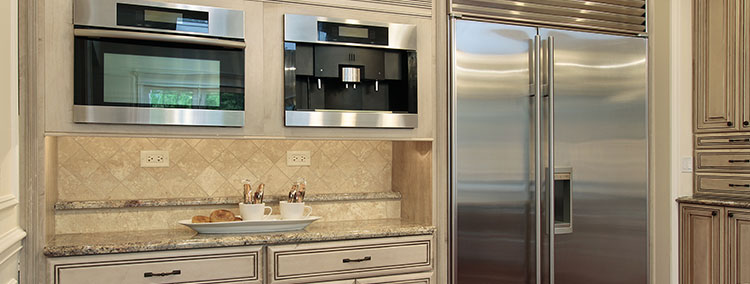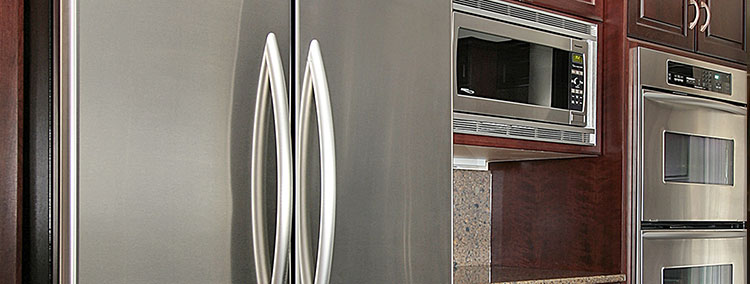Without the fridge, you wouldn’t freeze quick and simple meals, wouldn’t be able to store perishable items for an extended period of time without canning, and would have to consume everything at once because you couldn’t save leftovers. This is a hard life, right?
All of these advantages will disappear if your refrigerator breaks down. To ensure this doesn’t happen, you should pay extra attention to how the fridge works.
When you do this, you can catch your fridge before it breaks down and schedule refrigerator repair service before it completely breaks down.
To catch your fridge, you’ll need to be alert for warning indications that your refrigerator is nearing its end and take prompt action when you see them.
Some of the signs you should look out for include:
The fridge failing to cool the food
The sole function of your refrigerator is to cool food items, so if it’s not doing that, you have a problem you should fix as soon as possible.
Feel the refrigerator’s internal temperature by putting your hand inside and waving it around a little. Opening a refrigerator door should feel immediately cold; if not, there may be an issue.
To determine how much cooling is occurring, try prodding the food or other items in your refrigerator.
A great item you can use is butter. If a stick of butter is not kept at the ideal cold temperature, it will soften rapidly.
If the fridge isn’t cooling as well as it should, contact a professional to fix it.
The food is getting spoilt.
Food is refrigerated only for long-term preservation. Any food in the refrigerator should last for at least a few days.
Of course, this depends much on what it is and how long you can keep it there.
If the food expires within a day of being placed in the refrigerator, it indicates that there may be one or more issues with the fridge.
While inadequate cooling is typically to blame, there are other possible reasons. In addition to insufficient cooling air, the fridge’s motor, door seal, or other components could be the source of the issue.
It just takes a slight temperature decrease to push your leftovers into the danger zone, even though the fridge appears cold and the motor appears to be working.
High condensation
There might occasionally be some condensation on the inside of the refrigerator due to the temperature difference between the inside and outside.
This is normal as long as it’s limited to the fridge’s solid surfaces, such as the shelves and compartment doors.
While this is the case, you should be concerned if you notice condensation on your food or outside the refrigerator door.
Only in temperature-contrasting situations, such as the windows of your car or house, should condensation occur.
Your refrigerator may have a breach in the body or door seal, allowing warmer air to enter if there is excessive condensation inside.
The same is true for the door’s exterior; if there is a gap in the door seal, cool air escapes and drips onto the door.
This condensation can cause the refrigerator to get wet on the inside and outside, and the motor will start overworking to compensate for the lost cooling, which could result in high power consumption.
To prevent this problem, have it checked by a professional and fixed immediately.
Excess frost
Despite popular belief, the freezer section of your refrigerator should be covered only partially in ice. Your freezer should be at a constant temperature that prevents water vapor from entering, known as a dry cold.
If you start to notice a lot of ice in your unit, it indicates that your freezer needs to be properly regulated.
You should keep your freezer at a constant temperature that prevents water vapor from entering, known as a dry cold.
Therefore, it indicates that your freezer needs to be properly regulated if you start noticing a lot of ice.
A malfunctioning freezer door seal or an issue with the refrigerator’s internal temperature control mechanism could cause this.
Food in your freezer risks freezing into an ice prison if it is icing over. It might not indicate impending danger, but it’s something to watch out for.
Depending on your fridge’s make, model, and year of manufacture, you can physically defrost it with an ice scraper or run an internal defrosting program.
Hot or loud motor
Your refrigerator’s motor does all of the cooling work. The motor drives the evaporator coils, which distribute the cool air that keeps everything nice and frosty. The motor in your refrigerator may get a little warm, like any motor, but this is normal.
The motor is most likely going to fail when it becomes scorching hot. The motor operates above its recommended capacity when it produces high heat, which might lead to unexpected shutdowns.
Your fridge’s motor can make weird, loud noises and be hot. The motor normally makes a quiet humming noise whether the door is open or closed.
If the noise becomes louder and begins to splutter, buzz, or hiss, it may indicate that the motor is being overworked.
Feel around the engine by reaching the rear of the refrigerator if you can. It’s on its last legs if it’s hot and/or making a lot of abrupt rumbling.
Hiring a repair professional
When hiring an appliance repair Springfield professional, ensure that the professional you hire is experienced and knows what they are doing.
The last thing you want is to hire someone who causes more problems than they are there.
While fixing a faulty appliance is good, sometimes it might not be a solution. If your unit is old, you should get a new one.

